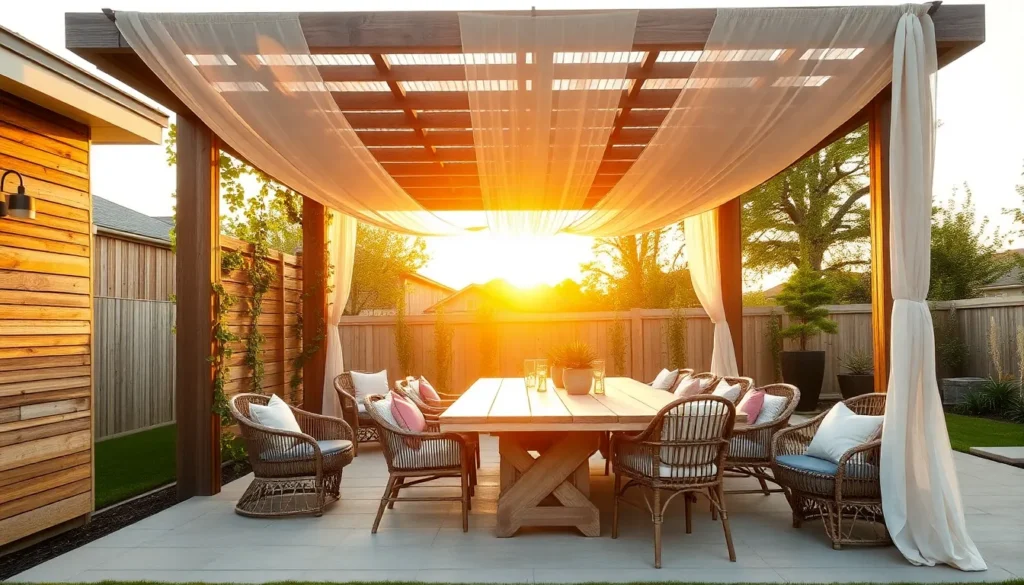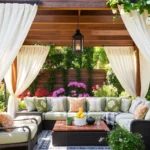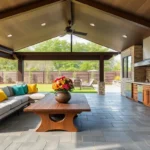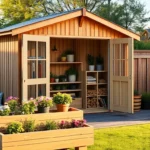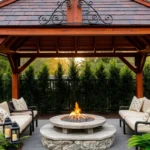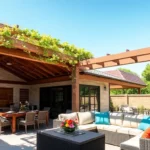Imagine transforming your backyard into a versatile haven that seamlessly expands your living space, offering comfort and functionality year-round. Whether you’re a newcomer to outdoor design or a seasoned enthusiast, the concept of multi-purpose outdoor shelters opens up a world of possibilities, allowing you to enjoy the tranquility of nature without sacrificing the comforts of home. By exploring innovative designs, you’ll discover how to maximize every inch of your outdoor area.
This article will guide you through ten ingenious outdoor shelters that cater to a variety of needs, from cozy retreats to dynamic entertainment hubs. You’ll learn how to select the perfect structure that not only complements your personal style but also enhances the practicality of your outdoor living environment. Let’s dive into the inspiring world of outdoor shelters and unlock the potential of your open-air oasis.
Understanding Multi-Purpose Shelter Benefits
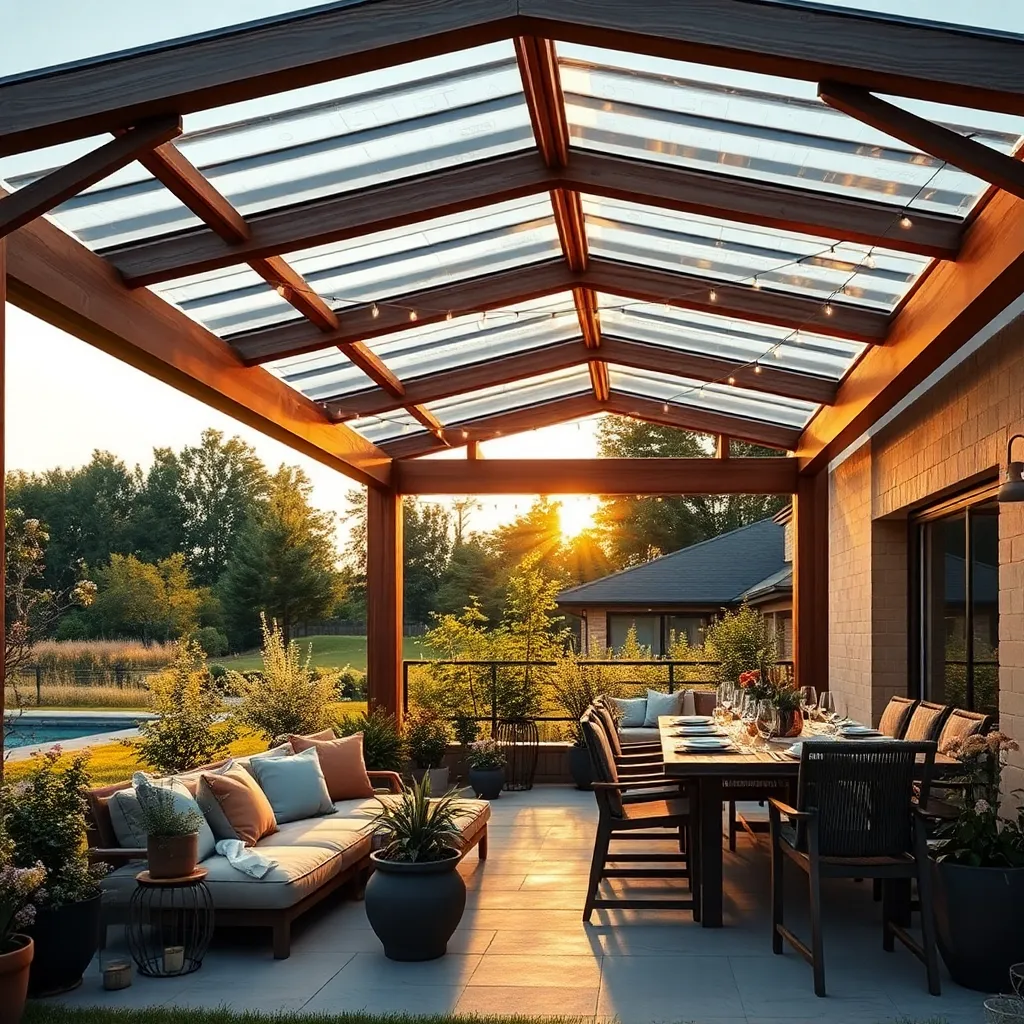
Outdoor shelters can transform your garden into a versatile living space, offering both functionality and aesthetic appeal. When considering materials, opt for durable options like cedar wood or metal that withstand weather conditions while adding a stylish touch. For a basic setup, consider a 10×10-foot pergola with open sides to allow airflow and natural light, enhancing your outdoor experience without feeling confined.
For those seeking more advanced features, integrate adaptable design elements such as adjustable canopies or retractable screens to control sunlight and privacy. Incorporating eco-friendly materials like bamboo or reclaimed wood not only supports sustainability but also introduces a unique texture to your shelter’s design. Whether you’re starting with a simple frame or an elaborate gazebo, remember that careful planning of layout and materials will maximize the utility of your outdoor space.
Choosing the Right Shelter Design
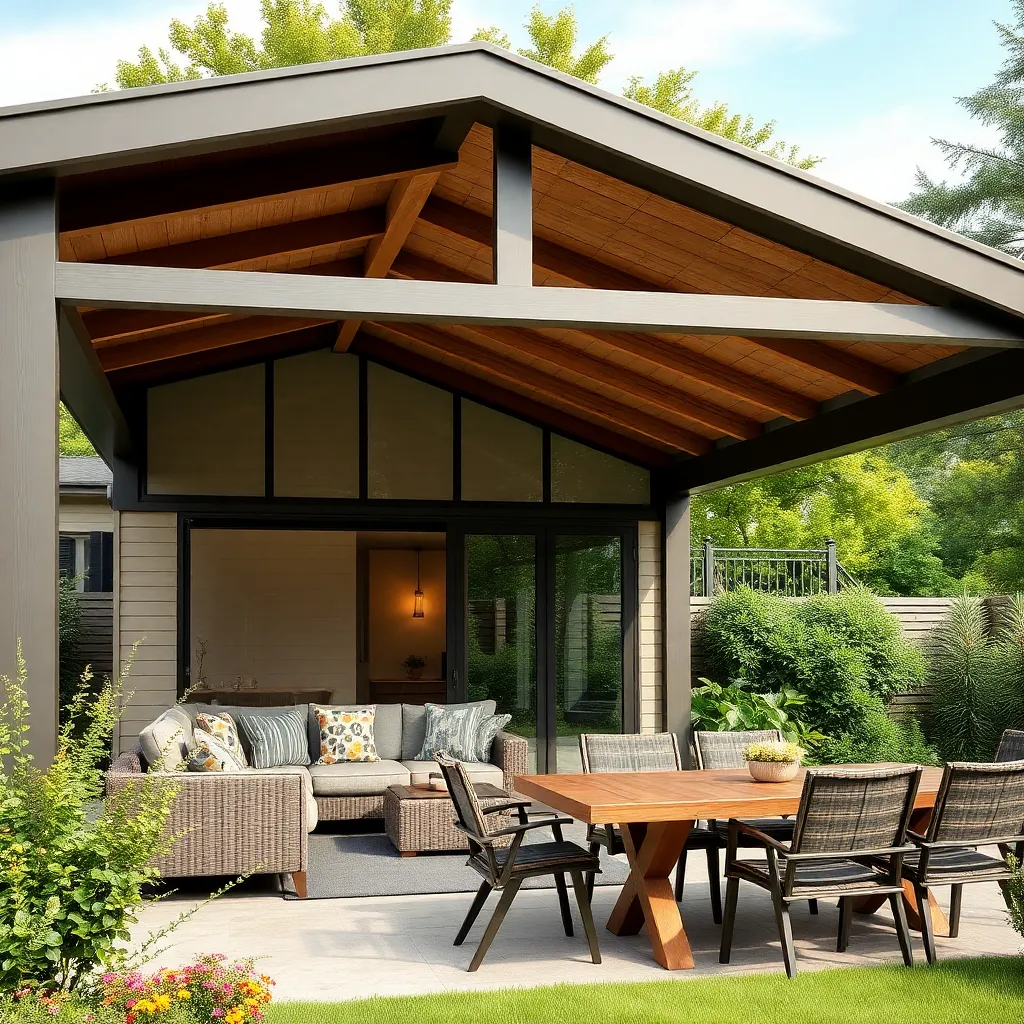
When selecting a shelter design, consider how the structure will be used throughout the year. For a versatile option, choose a shelter that allows for both open-air enjoyment and protection from the elements. Materials like treated wood or powder-coated metal offer durability and can withstand various weather conditions. For beginners, a simple gazebo or pergola can be a great start, providing shade and a cozy atmosphere. Advanced builders might explore retractable awnings or convertible spaces that adapt to seasonal changes.
Incorporate design elements that enhance both function and aesthetics.
- Consider integrating transparent or semi-transparent roofing to maximize natural light while offering rain protection.
- Use modular construction techniques to allow for future expansion or modification of the shelter.
Beginners should focus on straightforward designs with easy-to-source materials, while experienced DIY enthusiasts can experiment with custom features like built-in seating or planters. Ensure your design aligns with local building codes to avoid any compliance issues. By combining practical design with creative elements, your outdoor shelter can become a cherished extension of your living space.
Maximizing Space with Versatile Layouts
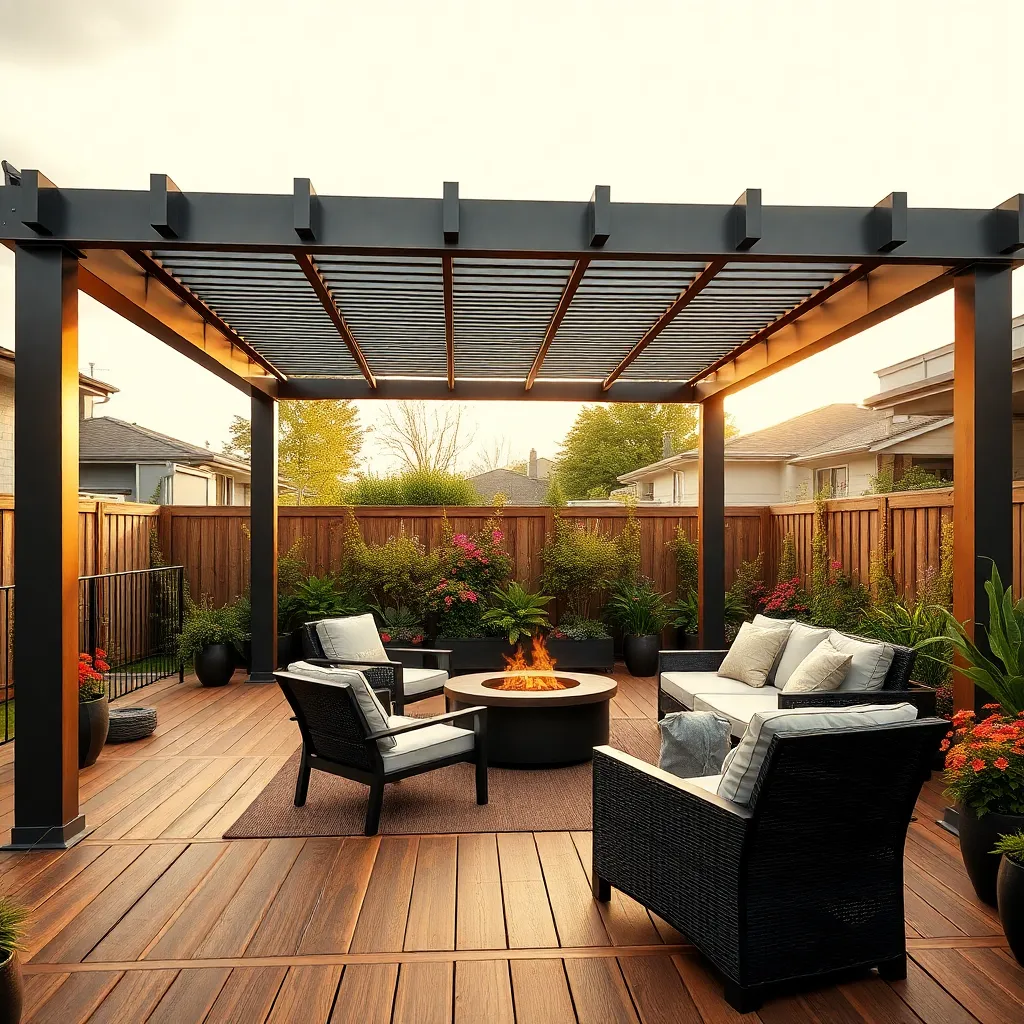
Consider incorporating modular furniture and built-in storage to make the most of your outdoor shelter space. Modular pieces allow for flexibility, enabling you to reconfigure the layout based on your needs, whether you’re hosting a large gathering or enjoying a quiet evening. Opt for weather-resistant materials like teak or powder-coated metal for durability, and include built-in benches with storage beneath to keep the area tidy and functional.
For those with limited space, maximizing vertical areas can transform the shelter’s functionality. Vertical garden installations, such as trellises or wall planters, can provide both beauty and privacy. Advanced gardeners might consider using a retractable canopy system, which allows you to adjust the shelter’s coverage as needed. Ensure the structure can withstand local weather conditions by using materials like galvanized steel for frames and UV-resistant fabrics for coverings.
Incorporating Sustainable Building Materials
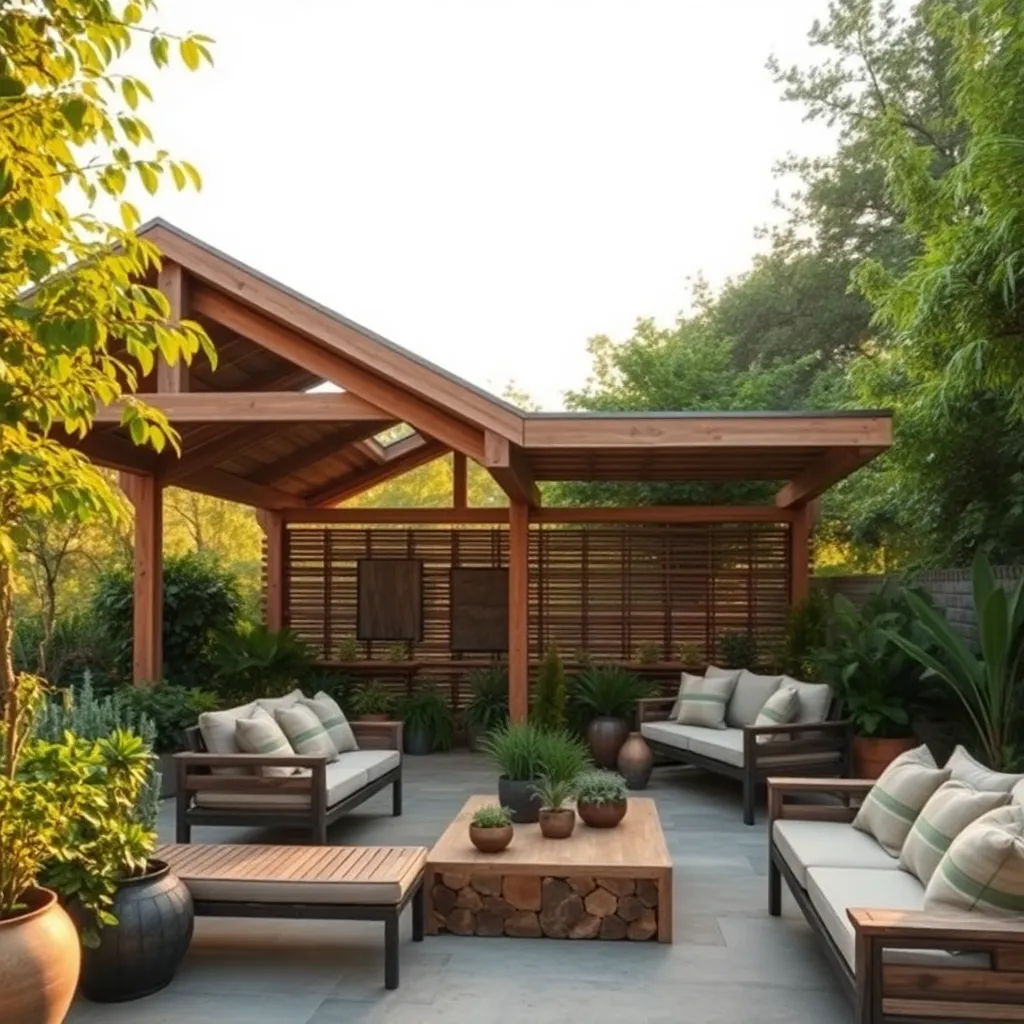
When planning an outdoor shelter, incorporating sustainable building materials is both eco-friendly and often cost-effective. Consider using reclaimed wood, which not only reduces waste but also adds a rustic charm to your design. Another excellent choice is bamboo, a fast-growing, renewable resource that’s strong and flexible, ideal for structures like pergolas or gazebos. For roofing, opt for recycled metal which provides durability and can reflect sunlight, keeping your space cooler.
Additionally, integrating sustainable materials into your design can be enhanced with thoughtful construction techniques. Use natural stone for the foundation or flooring, which is not only durable but also blends seamlessly with garden landscapes. For a modern touch, try cork flooring in enclosed shelters, as it is both sustainable and provides excellent insulation. Beginners can start with straightforward projects like raised wooden decks, while advanced builders might explore constructing walls from hempcrete, a biodegradable and energy-efficient material that offers excellent thermal performance.
Enhancing Comfort with Weatherproofing
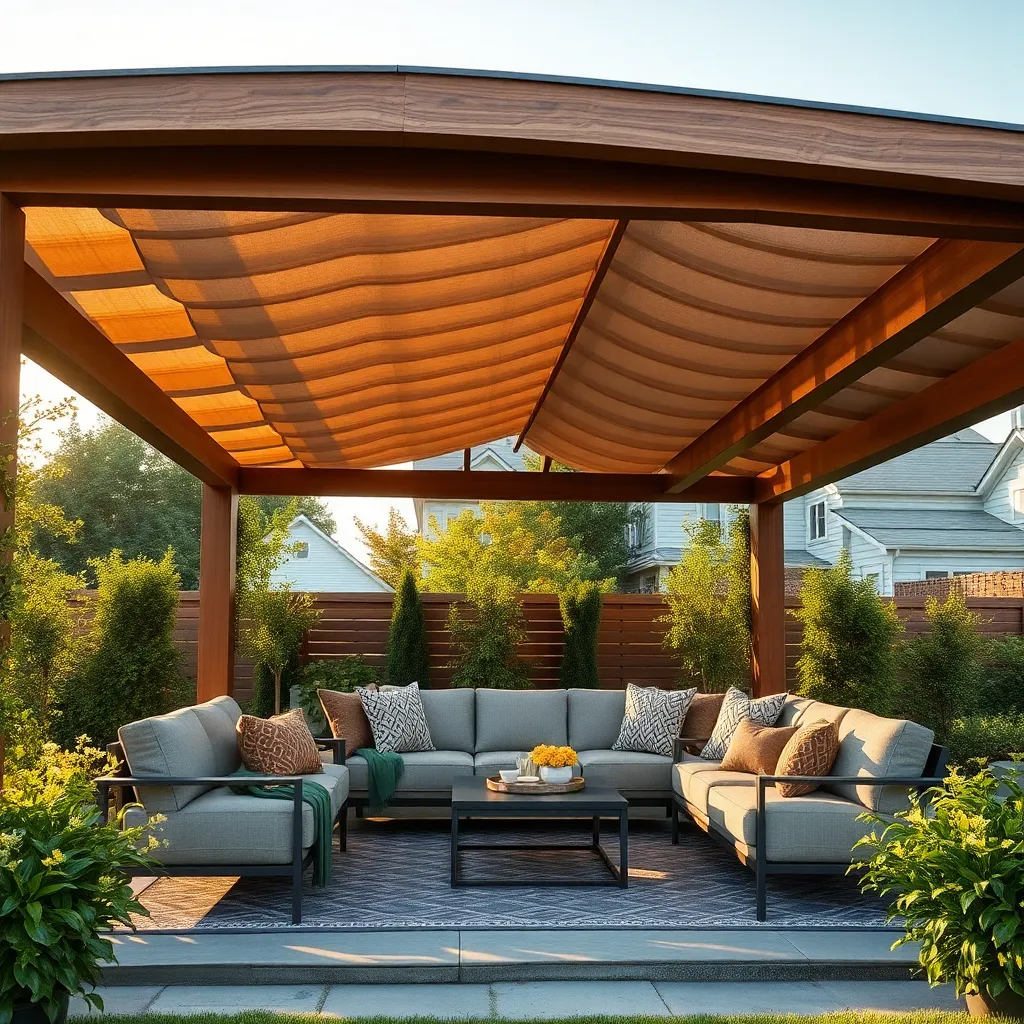
To enhance comfort in your outdoor shelter, focus on weatherproofing techniques that protect against the elements. Begin by selecting durable materials such as treated hardwood or weather-resistant composites for the structure. These materials not only withstand harsh conditions but also require less maintenance over time. For basic protection, install a high-quality, UV-resistant tarp or canopy that shields against rain and sun, ensuring your shelter remains a welcoming space all year round.
Going beyond the basics, consider incorporating advanced weatherproofing elements like insulated panels or double-glazed windows for enclosed shelters. These additions offer superior temperature control, making the space comfortable in both hot and cold climates. For flooring, choose non-slip tiles or weatherproof decking to prevent moisture damage and enhance safety. By integrating these features, you can transform your outdoor shelter into a versatile living area that withstands diverse weather conditions.
Integrating Shelters into Landscapes
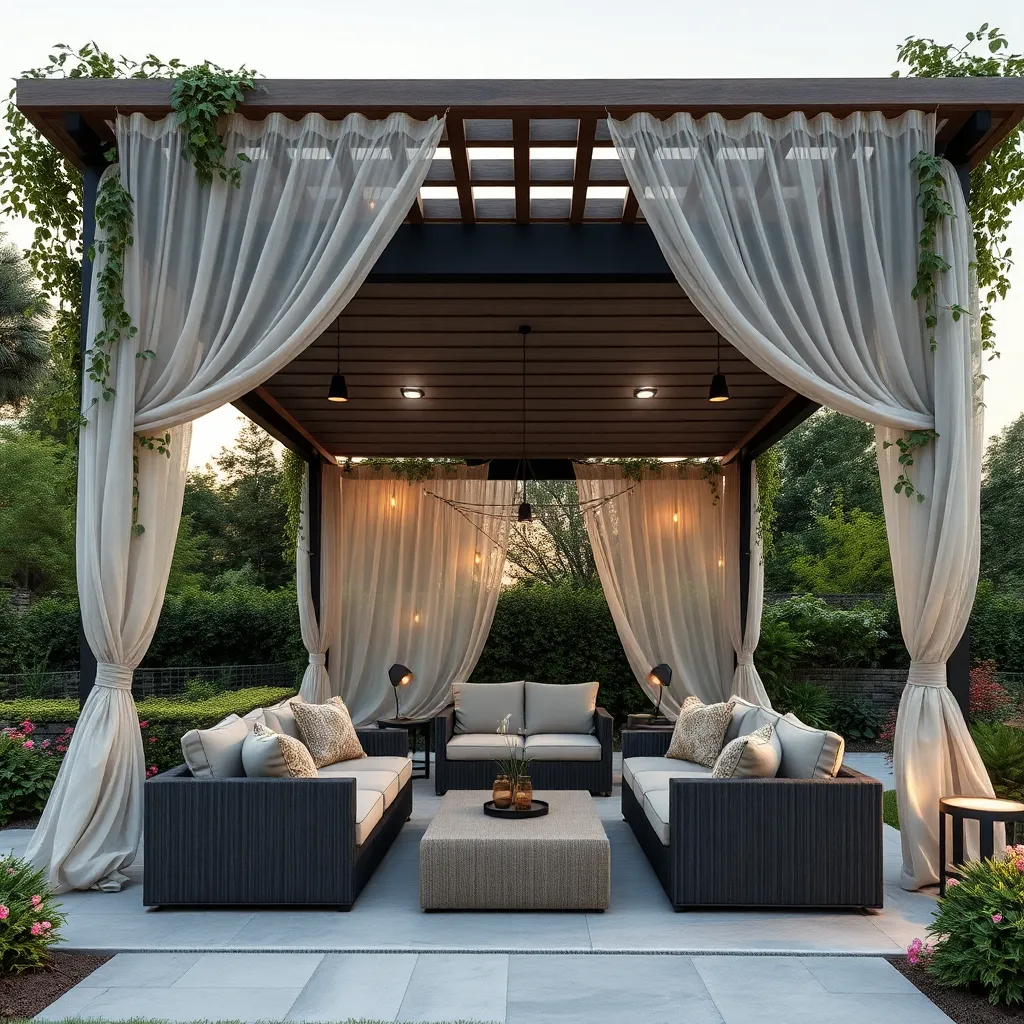
To seamlessly integrate shelters into your landscape, start by choosing materials that complement your existing environment. Consider using natural wood or stone to create a harmonious connection with your garden, ensuring your shelter blends rather than contrasts. For beginners, a simple pergola with climbing plants like wisteria or jasmine can create a beautiful, natural canopy. More advanced DIYers might explore a custom-designed gazebo with matching garden accents, like stone pathways or wood decking, to elevate the space.
Positioning your shelter strategically can enhance both the aesthetic and functional aspects of your outdoor area. Place your shelter where it can offer shade during the hottest part of the day or serve as a windbreak. Consider the view from the shelter and make sure it aligns with the most appealing aspects of your garden. For those looking to optimize space, incorporating built-in seating or storage can make the shelter even more functional. Use weather-resistant materials like treated wood or powder-coated metal to ensure longevity and low maintenance.
Customizing Interiors for Diverse Uses
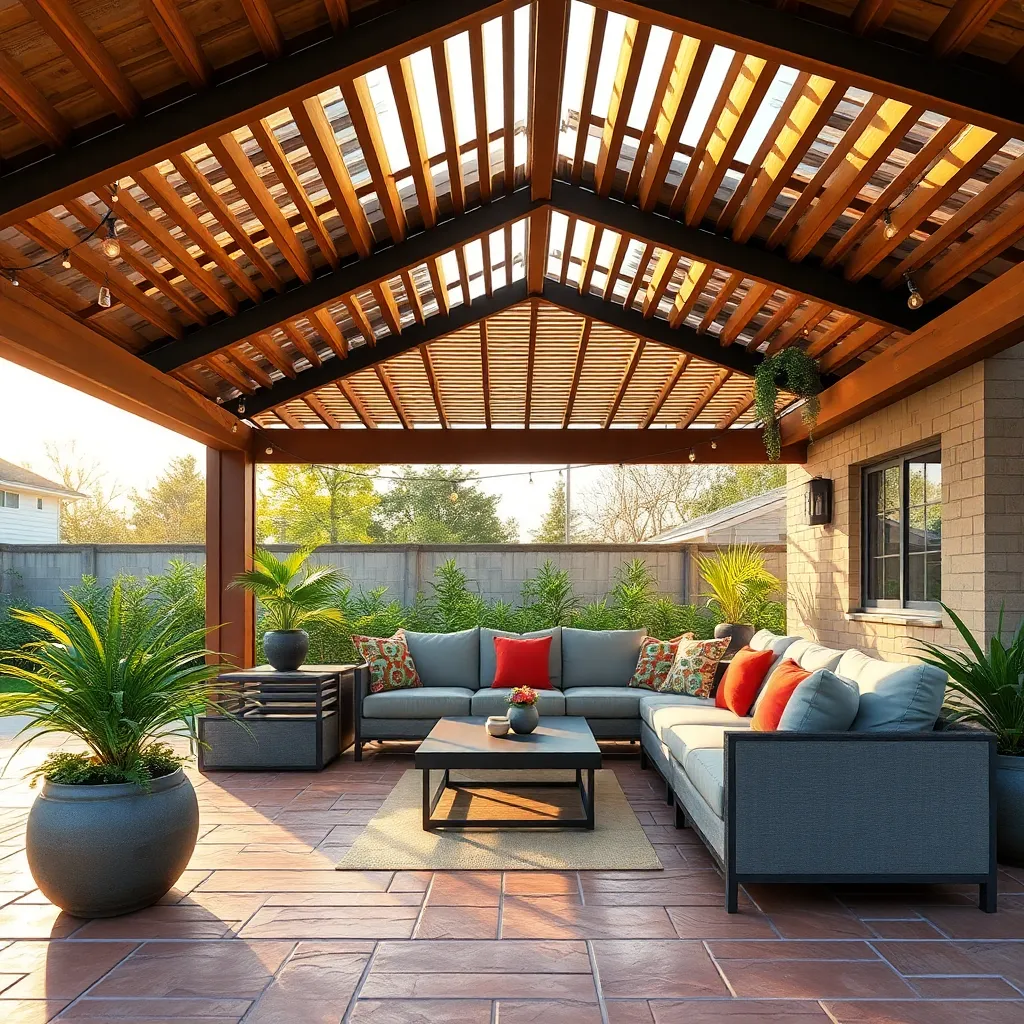
One of the most exciting aspects of customizing outdoor shelter interiors is the versatility they offer. Whether you’re planning a cozy reading nook or a vibrant art studio, consider using weather-resistant materials like treated wood or composite decking for flooring to ensure longevity. For beginners, adding modular furniture can offer flexibility; pieces like foldable tables and stackable chairs can be rearranged effortlessly to suit different activities.
To elevate your design, incorporate elements like insulated walls and ceiling fans for comfort across seasons. Advanced gardeners might explore integrating built-in storage solutions to keep tools and supplies organized without cluttering the space. Consider using natural light strategically with skylights or large windows, enhancing both the aesthetic and functional aspects of your shelter. By focusing on these design elements, your outdoor shelter can seamlessly adapt to a range of uses, enhancing your home’s livability.
Innovative Storage Solutions for Shelters
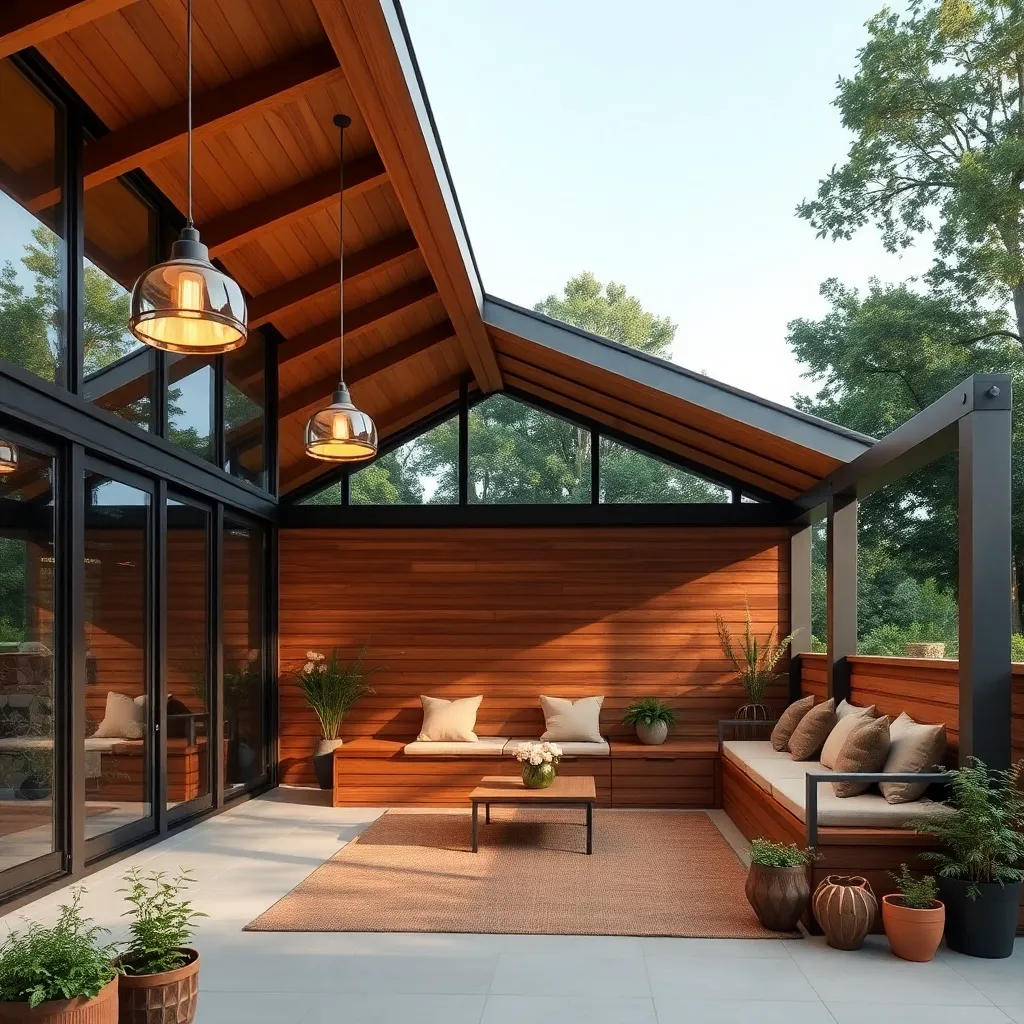
For those seeking to maximize their outdoor shelter’s utility, integrated storage solutions are a game-changer. Consider installing built-in benches with hinged lids, offering discreet storage for garden tools, cushions, or outdoor games. Weather-resistant materials like teak or cedar are ideal choices due to their durability and natural resistance to decay. Ensure the benches have a protective finish to withstand various weather conditions, enhancing longevity and maintaining aesthetics.
Advanced enthusiasts can explore modular storage systems that adapt to changing needs. Opt for adjustable shelving units that can be customized with hooks and baskets, perfect for storing anything from potted plants to barbecue supplies. For a sleek look, incorporate sliding doors or panels made from polycarbonate or acrylic, which are lightweight yet robust. These materials not only offer protection but also introduce a modern touch to your outdoor haven.
Lighting Options for Outdoor Shelters
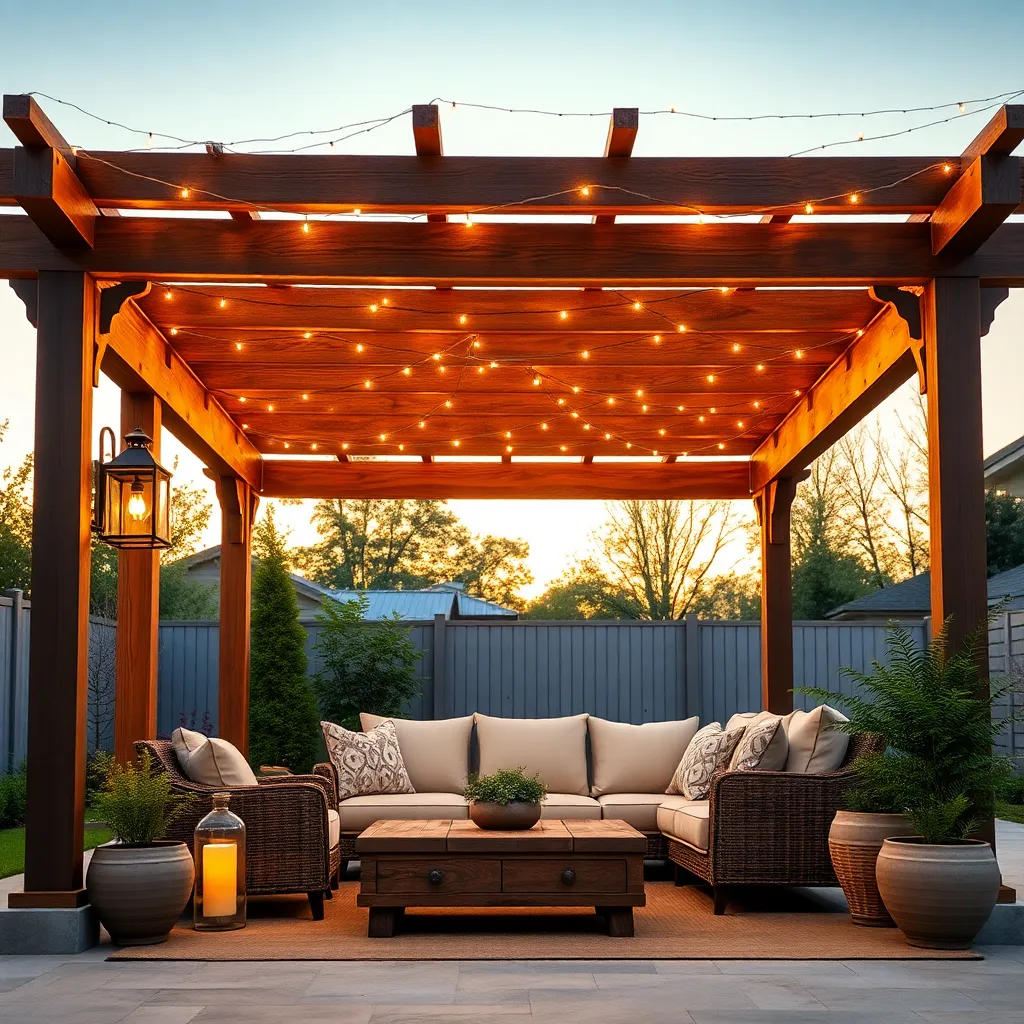
When it comes to lighting your outdoor shelter, consider using solar-powered LED lights for an energy-efficient and eco-friendly option. These lights are easy to install, requiring no wiring, and come in various styles, such as string lights for a cozy ambiance or path lights to illuminate walkways. For those who enjoy crafting, you can personalize your lighting by using lanterns made from recycled glass jars, adding a unique touch to your shelter’s decor.
For a more permanent solution, hardwired lighting fixtures offer durability and a polished look. Choose weather-resistant materials like stainless steel or powder-coated aluminum to withstand the elements. To enhance functionality, consider installing a dimmer switch for adjustable brightness, allowing you to set the perfect mood for any occasion. By combining different lighting types, such as task lighting for specific activities and ambient lights for general illumination, you can create a versatile and inviting space.
Maintenance Tips for Longevity and Durability
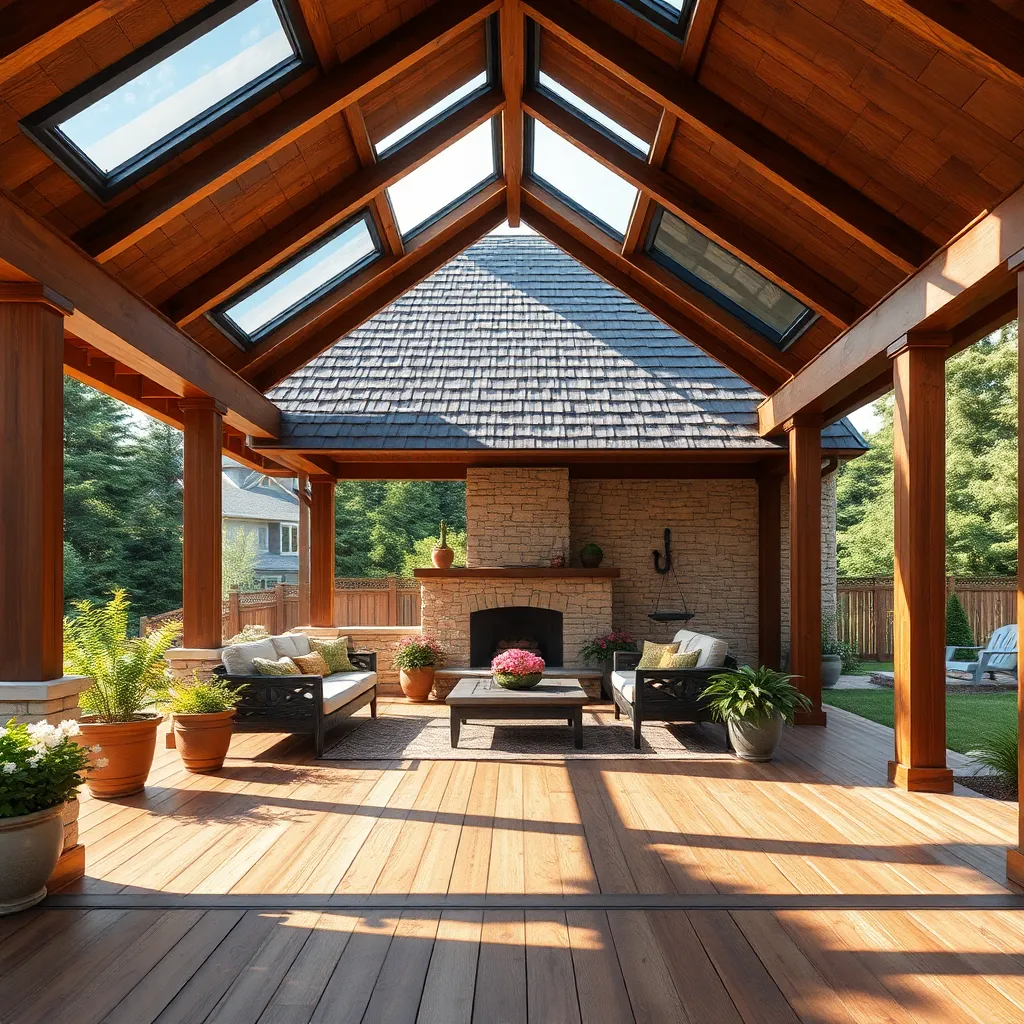
To ensure the longevity and durability of your outdoor shelter, regular maintenance is key. Start by inspecting the structure for any signs of wear, such as loose bolts or damaged panels, at least twice a year. Using rust-resistant materials like galvanized steel or powder-coated aluminum can help minimize corrosion, especially in humid climates. If your shelter is made from wood, applying a weatherproof sealant annually will protect it from moisture and UV damage.
Advanced maintenance involves keeping the shelter’s design elements in optimal condition. For instance, ensure that any built-in drainage systems are clear of debris to prevent water accumulation. Consider incorporating removable side panels or adjustable louvered roofs, which offer flexibility in weather protection and ventilation while allowing for easier cleaning and maintenance. Regularly check fabric elements like canopies or curtains for tears and replace them promptly to maintain both functionality and appearance.
Conclusion: Creating Beautiful Outdoor Spaces
In exploring the ’10 Multi-Purpose Outdoor Shelters for Extra Living Space,’ we’ve unveiled a world where creativity meets functionality, offering unique opportunities to enhance not just your physical space, but your relationships too. We discussed concepts like creating shared experiences, fostering intimate retreats, and building spaces for personal growth. These shelters become more than just structures—they’re catalysts for connection, offering platforms for family gatherings, romantic evenings, and peaceful solitude.
As your next step, consider assessing your outdoor space to identify which shelter could best facilitate the relationship dynamics you wish to nurture. Whether it’s a cozy gazebo for quiet conversations or a versatile pergola for family activities, there’s an option to suit every need.
Remember, strong relationships are built on shared experiences and thoughtful interactions. Save this article now to keep these innovative ideas at your fingertips for future inspiration. As you embark on this journey of enhancing your living space, you’re also investing in lasting relationship success. Take the first step today, and watch how these spaces transform your connections, creating a future filled with warmth and unity.

